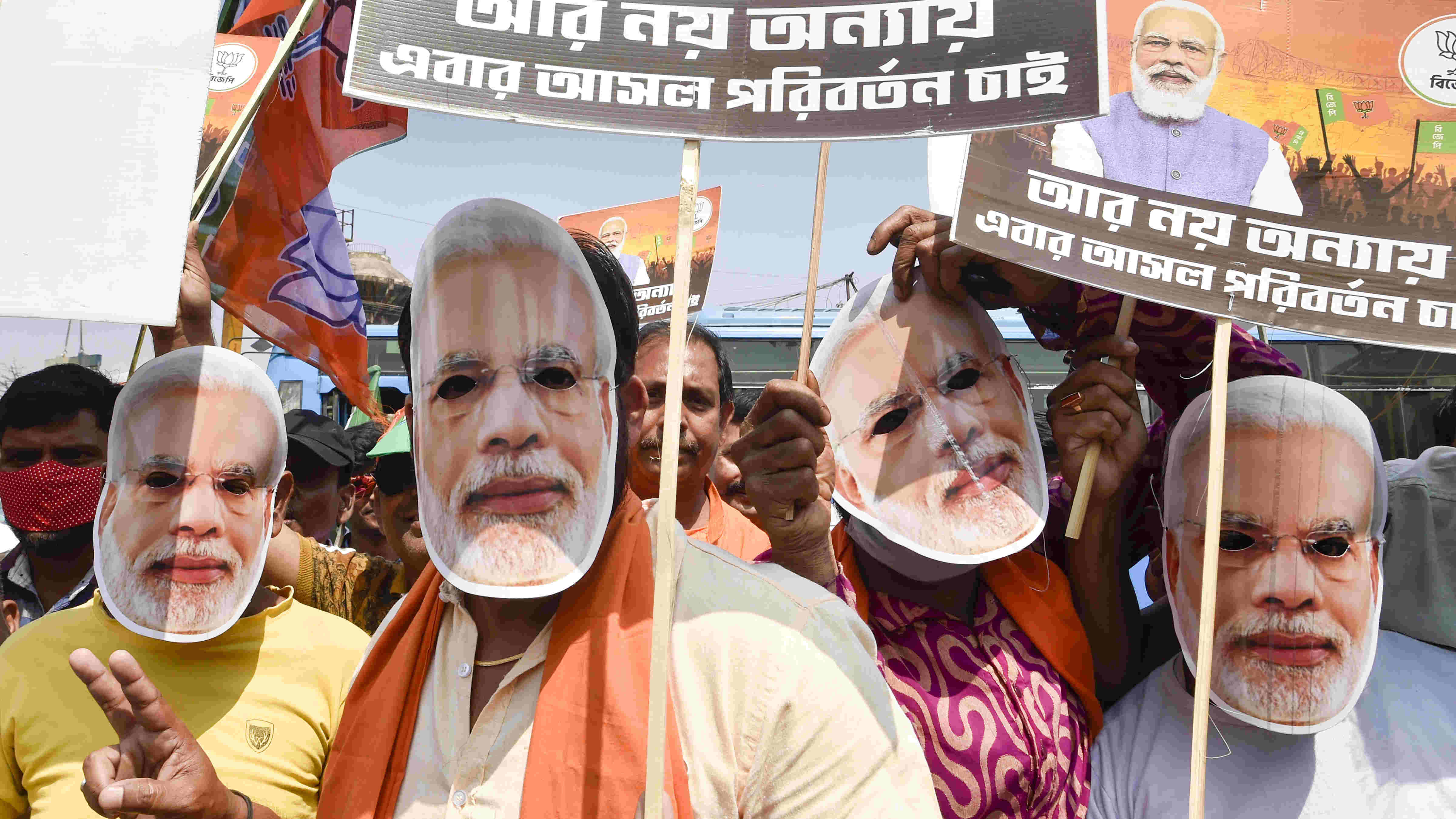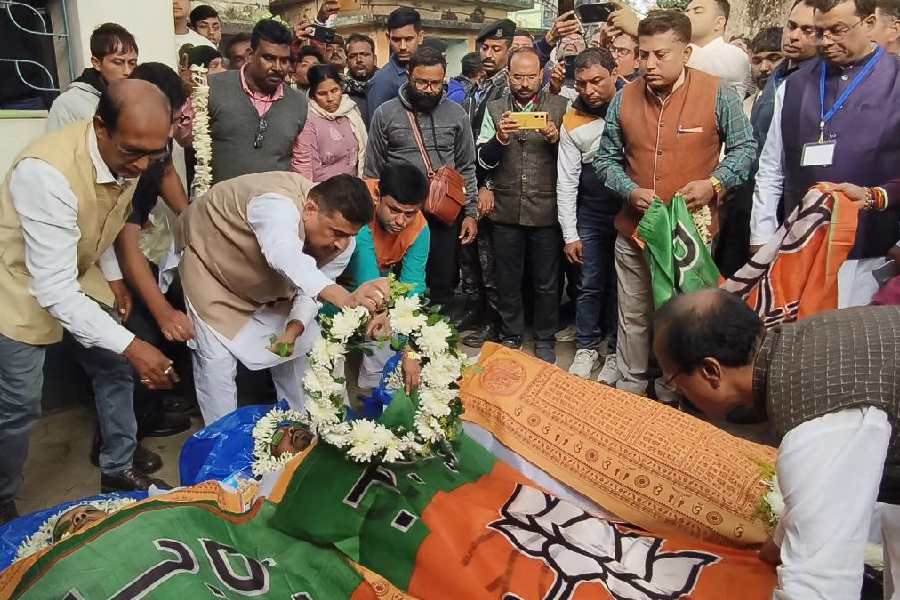Some major states are going to choose a new legislative assembly in the coming month. West Bengal’s outcome is of particular significance to the future of Indian politics. The Bharatiya Janata Party has been trying its level best to make deep inroads into Bengal, and has been reasonably successful so far. This success can be traced to a number of reasons. The first is the undercurrent of discomfort with minorities that the middle-class Bengali bhadralok hides beneath a façade of liberal posturing. The second is the Trinamul Congress government’s pandering to minorities in an attempt to ensure the support of a very large vote bank. The third is of course the anti-incumbency factor that has set in, with many people perceiving the state government as corrupt, inefficient and unduly centralized, with effective power resting almost exclusively in the hands of the chief minister. Finally, the BJP is a well-organized party with a strong backing from the even more organized Rashtriya Swayamsevak Sangh that has concentrated its efforts in expanding its organizational base in the rural areas and small towns of the state. This time, therefore, there is a substantial chance of the BJP winning a majority in the state elections.
This chance is being enhanced by the fact that the opposition is splintered and fragmented. The TMC has been losing a number of popular faces of the organization to the BJP. The Congress exists only in tiny pockets with hardly any organization worth the name. There is no well-known state level leader who has any mass base. The Left parties have become moribund with not a single new young face projected at the state level. Many Left party workers joined the TMC and even the BJP, possibly to save their own skins, or perhaps to partake of the political loot that every ruling party in India extorts. The Left appears confused about what to do and what strategy to adopt, except making sporadic noises about the imperial machinations of neo-liberalism.
One might say that political parties come and go, governments change, illustrious personalities win and lose elections — indeed, is this not the name of the game called democracy? Hence, what is the big issue about the Bengal elections? Yes, Bengal has a history of electoral violence and hence the rather outlandish schedule of holding elections in eight phases. Is it not better to be safe than sorry? All these are true but this election is still significant in terms of long-term political trends.
For the BJP there will be a huge symbolic significance if it can wrest West Bengal from the TMC, or even come close to a majority. Bengal has a strong legacy of left democratic politics and dissent. Indeed, Mamata Banerjee’s political and economic priorities (despite her deep dislike of the Marxists) are extremely similar to the Left’s populist strategies, barring, of course, the mention of Marx or Lenin in its official discourse. Bengal also has the second largest concentration of Muslims in India. Gaining control of the state and preaching the gospel of Hindutva would be a spectacular gain for the BJP. It would appear to reclaim the territory from where one of the icons of Hindu nationalism came — the late Shyama Prasad Mookerjee. It could also become another laboratory for the UP style of politics. Uttar Pradesh, incidentally, has the highest number of Muslim residents in the nation. Finally, it would be a big step forward for the BJP in creating an Opposition-free India. With the BJP in power, the organizational set-ups of the Opposition parties (weak as they already are) could soon be decimated in the state.
In this important election, the role of the Left-Congress combine could be decisive. It has acquired a new ally in the Indian Secular Front which is essentially a minority vote bloc. The combine is equating, in its election campaign, Mamata Banerjee’s TMC with Narendra Modi’s BJP. However, its own support has been dwindling rapidly, and its ability to win a significant number of seats in a triangular contest is exceedingly slim. What it might be able to do, however, is split the anti-Hindutva vote so as to give an advantage to the BJP. The Left parties have often realized their tactical errors after the opportunity has slipped away. This election is likely to add to their list of historic blunders.
Why would it be inaccurate to equate the TMC with the BJP? The answer lies in distinguishing between authoritarianism and fascism. Mamata Banerjee does not have a defined ideological position. She is focused on more mundane, daily issues. She is surrounded by opportunistic and self-seeking sycophants. Banerjee finds comfort, in her inimitable maverick way, in centralizing power. She has few people she can trust. Her party’s organizational strength is weak. She rides on the popularity of her own image. She takes decisions on her own. She is quick to isolate anyone she is suspicious about. Her personal likes and dislikes are important ingredients in her decision-making process. She is authoritarian without a doubt. However, she is not communal and does not believe in majoritarianism. She has also been, arguably, the strongest, most consistent and loudest anti-BJP political voice in the country. This is the vital difference between her authoritarian politics and the fascist trends exhibited by the BJP.
The BJP has a clear ideology about the concept of nation, the importance of religious practices as a cultural force, and the secondary position of minorities in the order of citizenship rights. The party’s organizational strength and financial resources are awesome, especially considering the backing of the RSS. The senior party members speak the same language and share the same vision. Their ability and propensity to shut out dissent are much stronger and purposive than those of the TMC. The TMC leadership can be undemocratic and has used force to increase political control. This is a feature of all political parties in India. The BJP can and does do the same, but the key difference is that the political tactics of the party lead to well-defined outcomes. Mamata Banerjee is the TMC and the TMC is Mamata Banerjee. This is not true for Narendra Modi and the BJP.
The Left might have one argument in favour of its strategy: it wants Banerjee to be defeated so that it can gloat over a pyrrhic victory. With the BJP in power, it perhaps believes that all anti-fascist forces will gravitate towards the Left parties. The Left parties are still licking the wounds inflicted by the TMC. But with the TMC gone, the Left is likely to get a more comprehensive beating from the Right. That is what history has taught us a number of times. The argument for a purely left anti-fascist movement is not very convincing either, since it has tied up with its bitter old enemy, the Congress, in an effort to boost its electoral tally.
Indian politics is at a crossroads. We are looking at the concrete possibility of a political Opposition-free nation with serious erosions of civil liberties. The country has already slipped from being considered a free nation to being categorized as a partly-free nation for the first time in history. India’s economy continues to slip, as discontent and despair keep mounting and inequality gathers momentum. Yet, strangely, these issues are considered less important. The promise of a messiah, the return to a golden age and the vision of a strong nation remain the key ingredients that stoke the fire of hope in so many of our fellow citizens.
The author is former professor of Economics, IIM Calcutta










